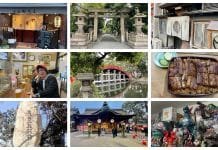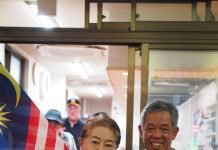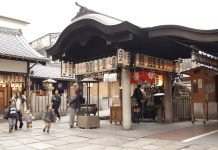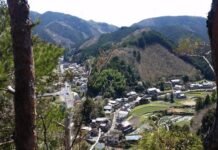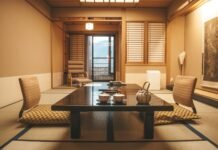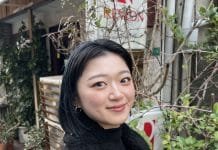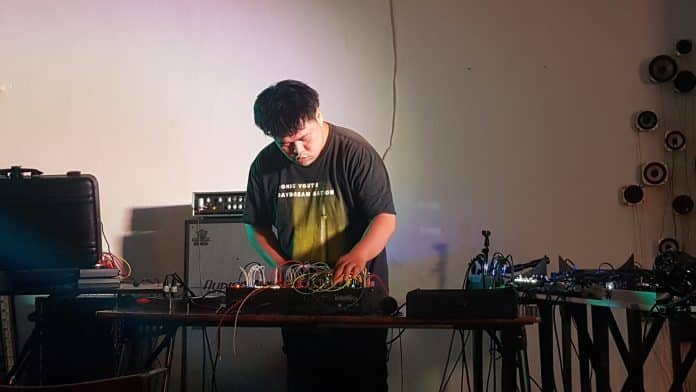
On the 10th of September, 2022, I visited one of my regular places for interesting experimental live shows as the line up seemed to catch my attention, partially because I was able to see couple of my friends perform live after some while, and also because the headliner of the event had a Finnish name, which stands out anywhere even on a global scale in its intriguing unusualness. Environment 0g, more familiarly zero gauge, is a basement space located in Sakuragawa, near the exit number 2 of Sakuragawa station, just across the bridge and to your right on the first building there is to be seen. Direct address for those interested is 3-chōme-6-1 Minamihorie, Nishi ku. Maybe hard to find at first if one does not now what they are looking for, one soon finds themselves regularly heading into the same place for interesting music and art performances. Especially home to electronic music, 0g also provides a large variety of events ranging from all kinds of experimental performances and noise shows to occasional hardcore punk and black metal events. So I would very much recommend checking it out if you get a chance. Kamikata Experimental is a monthly event curated by the owner Junya Hirano, who also runs the label Remodel.
What I really like about the space is that one can easily combine live sound from acoustic instruments to electronic sound provided by the huge PA system that is quite impressing to look at. The decoration and space design are minimalistic but interesting and fit the space and usually the music quite well. The events are usually kicked off by Junya Hirano, whose DJ sets are always interesting and you can usually find something to listen to long after the evening. Ranging from aggressive techno beats to minimalist and avantgarde fringes of the musical space, sometimes mixing different things together to come up with something completely new. Some of his sets can be listened to through mixcloud, highly recommended! This time I wasn’t able to catch his set as I was delayed by other things.
Table of Contents
消えたとて浮かぶもの
I arrived when the first performer 消えたとて浮かぶもの Kietatoteukabumono was almost finishing up his gig, it was an interesting combination of modular synthesizer and voice, which together created an eerie landscape. Somehow the artist’s appearance was also fitting with the music, somewhat expressionless and distant, but moving to the rhythm, the sound of the voice melting into the textures, it was something I want to look into in more detail later on.

Castanopsis
Next up was Castanopsis, whom I have seen a couple of times before. He too uses modular synthesizer, but creates soundscapes completely different, beat oriented, at times with something almost like a simple triphop feel to them. At other points he made me think of the tradition of Japanese ambient, although usually not so heavily reliant on the beat, the sound is somewhat similar. But the presence of a clear beat is something refreshing especially in the context of the modular synthesizers, which often appear to be left to their own devices, beeping and booping on aimlessly towards the predestined end of the show. But Castanopsis’ use of the instruments stands out, as it seemed to be painting imagery of beams of sun breaking through the clouds, lighting up the world after the rain or a long cloudy afternoon. Somehow too, although this connection might exist only in my head, it brought to mind some more mellow but beat oriented parts of Justin Broadrick’s Jesu, which I really like. Maybe there was a certain strain of sadness or melancholy running through the beauty of it all, and that might be what gets my mind wandering in its usual paths like this. But definitely this feels like music highly connected with light and transformation of it, slowly changing from one thing into another, moving in between different shades of same color during the half an hour set. It was somehow a really natural approach to sound, although everything was produced by synthesizers, but somehow filtering or some other effect gave it a warm tape-like quality which is always a great thing in my opinion.

Zenmei
After Castanopsis, the stage was cleared for Zenmei, whose noise was accompanied by the visuals consisting of various movies like Altered States, and mostly by the footage from a steel factory, to which the harsh noise fitted quite perfectly. Somehow the contrast between Castanopsis’ nature-envoking sounds and Zenmei’s industrial, certainly more human made concept was also great in it’s harshness. The artist himself was wearing some sort of a cape and a mask, but the focus of the visual aspect was highly on the video projected on the wall. It was somewhat refreshing to hear such a straight forward burst of noise, epecially as the interesting looking instrument with huge springs laid aside on the floor gave a promise of intense junk action to come. I am not sure, but I think there was some sort of light sensitive effect used, alongside with some more often used and common noise sources. What really stood out was how well the visuals fitted the noise, there were heavier beats when the huge machines were pounding the steel beams, and some high pitched saw-like noises when there were circular saws, and other such elements that really fitted well within the context of audiovisual experience. And finally, towards the end, the spring instrument was played with a small axe, but before that the artist banged it on the high metal stands that are often used at 0g, which gave some probably improvised but welcome metal percussion aspects to the whole thing. Actually I would have like to see that implemented even more into the performance, as metal percussion would fit perfectly something like that, especially considering the visuals used. Maybe in the future he will find a collaborative companion from one of the Osaka’s metal percussionists!

Discrete Deity
Discrete Deity was quite minimalistic but meditative experience, consisting only of taisho koto played at first with almost only the acoustic sound of the instrument, then through slowly accumulating distortion, on top of which the voice created another layer. It was great to see the traditional instrument, as name suggests from the Taisho era, an attempt to make the traditional koto more accessible by slightly westernizing it to resemble a guitar in many aspects, used in such a different context. Although one might think the repetition of maybe two, three discordant chords might get tiring, it was quite the opposite. Maybe the tuning was also changing during the gig slightly, but mind kept listening to the sound even more intently, hearing new things among the sounds one already thought to know inside out, therefore diving deeper into it with each new discovery. The voice was drenched in echo which made it sound like some abandoned god screaming from the forgotten halls of time, along with the discords of koto it became really impactful experience in its own right. I also liked the fact that there was no loopers or even too many effects used, but the sound was just as it was. Eventually, the show ended with slowly disappearing plucking of the strings, which left the mic picking up feedback from the huge speakers, drowning everything in the high pitched, screeching sound, overtones of which rang beautifully in the concrete space. I think it was a great way to end the gig, as it left you feeling the sense of space, actually sensing it through your ears and listening to it ring. What I really like after a noise like that is how huge the silence following it sounds. The contrasts are important part of music, and the weight of silence can be heavier than any noise, no matter how huge the amplifier is.

Nobuhiro Okahashi
Nobuhiro Okahashi played his first live show in a while and I was excited to see him play. I also want to highly recommend his album Shine In, which can be found on Spotify and all the streaming services I think. Okahashi’s spacy drones are just immensely beautiful, they invoke images of the vastness of the oceans and skies, something that just spreads out into eternity as far as the ear can hear, and it does it so beautifully. Always a pleasure. Time just melts away completely. This time he also used quite a lot of field recordings which was new, I really liked that as they appeared to bring real life and world closer within the electronic sound. I talked to him after the show and he said he had lately gotten into recording field recording stuff with his phone, and that especially the last part with the garbage truck sound of Kansai is something that Osaka people will instantly recognize. I was surprised because having only lived here, I just assumed that all the Japanese garbage trucks will play the same songs, but apparently that is not the case. Live and learn!

Nevertheless, the soundscapes of field recordings open up the space for new kinds of silence. When they are applied, one does not necessarily need regularly expected elements like rhythm or melody; if a short sample of sound is looped, human consciousness will build those both out of that material, and that to me is often more impressive experience than most of the well-honed music I have witnessed in my life. To listen to a simple sound happen again and again, to hear the musicality of it, and simultaneously realize that it is your own consciousness building that music out of the mundane source, that is where the magic of art and music happens in my opinion. This sort of observant way of listening opens up new pathways in music, and I hope Okahashi will explore them further in his future works, as they fit well with his ambient, slowly evolving landscapes, adding somehow another reality on among it and transforming everyday reality into music.
Johanna Elina Sulkunen with visuals by Tapani Toivanen
Lastly, it was time for Johanna Elina Sulkunen to take the stage. The music was accompanied by the visuals by Tapani Toivanen, and they both worked together immensely well. At first the sound, being more abstractly voice focused, the visuals started from nothing and slowly became evolving into grainy light like shapes, like cells still uncertain of what sort of lifeform they will eventually create, then, little by little the voice and synthesizer landscapes came together, the visuals became more distinct, clear. There was material of plants, deserts, different sorts of life and environments, that were getting some sort of glitch and modulation by artificial intelligence, and I must say this material was by far probably the most interesting AI use in visual art I have seen to date. And even thematically, they fitted well together with the sound; there were almost spoken word piece like parts about nature, and somehow the interaction of human voice and synthesizer made me contantly think of the symbiosis between human beings and machines in this modern era we are living right now. It was interesting and thought provoking, like mechanical birds flying out, the images of nature being glitched and transfigured by machine thinking, but human mind being the curator who chooses what the machine has to think, setting up the limitations of those thoughts. Therefore arose another question in my mind, who or what has set the perimeters for our thinking capacity, and are there limitations we can not exceed within the context of our understanding, because we are unable to see beyond the system within which we are operating? Art that makes you think thoughts like this is definitely worth the time spent with it.

Somehow, the set seemed like a constant on going conversation between organic human and the thinking machine. Sometimes the other was louder than the other, they grew on each other and affected each other, and the visuals followed. I don’t want to use the word “battle” or “struggle”, simply because it did not feel like one. It was not a competetive effort, but a co-existence, it was not positive or negative force, it was just something… natural, something that flowed through consciousness. And I mean this as a high praise. It is not an easy thing to do, something like that. Something that just “is” instead of declaring something huge and usually making the exclamation seem slightly cartoonish or blatant. This sort of expression seemed somehow more honest to truth, the experience of existence itself, more expressing how it is, than wanting to know why or what it is, trying to pidgeonhole it into something certain, which I think is often a doomed attempt to begin with.
At this point I realized that somehow, probably unintentionally but nevertheless there arose a running theme of natural versus industrial, organic versus mechanic in much of the nights music. Actually, the unintentionality of it made it even better, because that way it happened more organically, the separate, completely different entities coming together into interaction. With different performers the underlying theme might have felt different, but in this context everything seemed to be having this one going conversation of natural sound and synthesized sound. And in the music of the headliner, this too seemed to come into some sort of conclusion in a great way. I could definitely hear something very familiarly Finnish in it too, probably everything heavily leaning on the vocals has some strain of Lau Nau’s legacy in it, but Johanna Elina Sulkunen stood firmly on her own feet on this instance too. Besides, having lived in Denmark for over a decade, she might not be too attached to the Finnish music scene as such anyhow, but from a personal experience I know, that no matter where in the world one of us ventures, they always take some small mental corner of moss and pine trees with them.
After Osaka her tour took her to Kasai and Kyoto for three more shows, although without the visual aid of Tapani Toivanen, which I think was kind of a shame, because they worked really seemlessly together and the visual aspect also gave a lot of food for the thought, as it appeared to be evolving with the sound, searching new life forms and pathways of existence, lifeless images having some amoeba like movement and faces transforming into others, clouds coming and going out of existence, it was all really interesting I thought.

Everyone in the audience seemed to enjoy the experience a lot as well, and when one viewer said after the show, that “Finnish people… are not really human, but pure nature!” I couldn’t help but feeling somewhat proud of my countrymen, who are often overlooked as they are few and live far apart, in a country mostly uninhabited. But that connection to the nature is exactly a thing that connects Finnish and Japanese culture in a way that not too many other nations appear to understand so profoundly and naturally in their bones.





